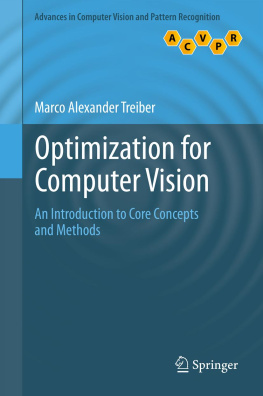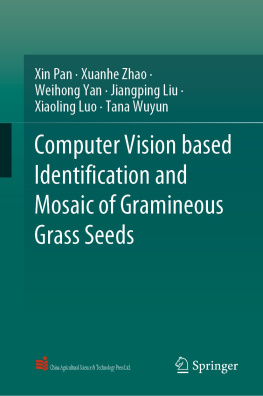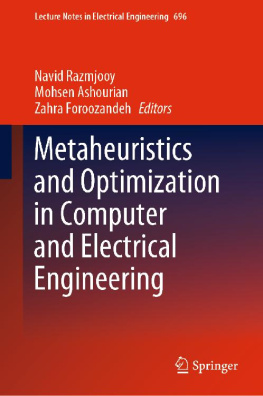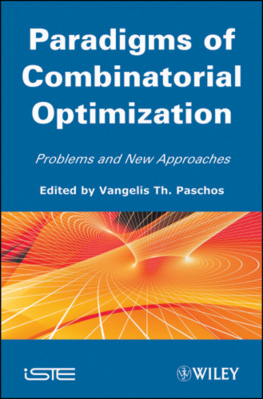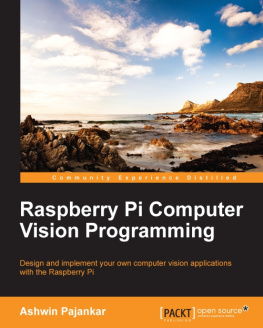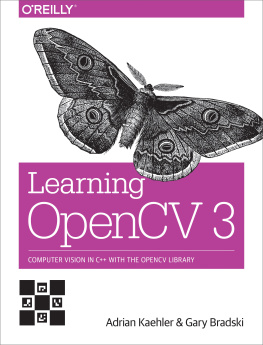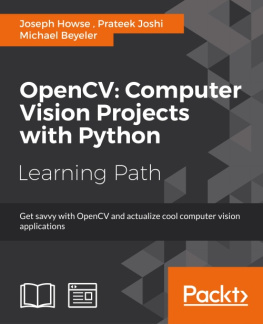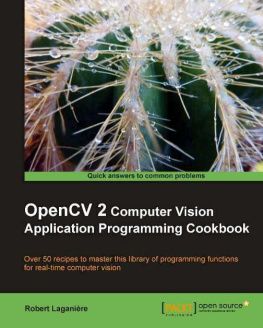Marco Alexander Treiber - Optimization for Computer Vision
Here you can read online Marco Alexander Treiber - Optimization for Computer Vision full text of the book (entire story) in english for free. Download pdf and epub, get meaning, cover and reviews about this ebook. City: London, publisher: Springer London, genre: Computer. Description of the work, (preface) as well as reviews are available. Best literature library LitArk.com created for fans of good reading and offers a wide selection of genres:
Romance novel
Science fiction
Adventure
Detective
Science
History
Home and family
Prose
Art
Politics
Computer
Non-fiction
Religion
Business
Children
Humor
Choose a favorite category and find really read worthwhile books. Enjoy immersion in the world of imagination, feel the emotions of the characters or learn something new for yourself, make an fascinating discovery.
- Book:Optimization for Computer Vision
- Author:
- Publisher:Springer London
- Genre:
- City:London
- Rating:5 / 5
- Favourites:Add to favourites
- Your mark:
- 100
- 1
- 2
- 3
- 4
- 5
Optimization for Computer Vision: summary, description and annotation
We offer to read an annotation, description, summary or preface (depends on what the author of the book "Optimization for Computer Vision" wrote himself). If you haven't found the necessary information about the book — write in the comments, we will try to find it.
Optimization for Computer Vision — read online for free the complete book (whole text) full work
Below is the text of the book, divided by pages. System saving the place of the last page read, allows you to conveniently read the book "Optimization for Computer Vision" online for free, without having to search again every time where you left off. Put a bookmark, and you can go to the page where you finished reading at any time.
Font size:
Interval:
Bookmark:
 which is called the objective function , find the argument
which is called the objective function , find the argument  which minimizes
which minimizes  :
: 
 are referred to design variables . The function
are referred to design variables . The function  describes the optimization criterion, i.e., enables us to calculate a quantity which indicates the goodness of a particular
describes the optimization criterion, i.e., enables us to calculate a quantity which indicates the goodness of a particular  .
. is composed of the roads, streets, motorways, etc., stored in the database of the system,
is composed of the roads, streets, motorways, etc., stored in the database of the system,  is the route the system has to find, and the optimization criterion
is the route the system has to find, and the optimization criterion  (which measures the optimality of a possible solution) could calculate the travel time or distance to the destination (or a combination of both), depending on our preferences.
(which measures the optimality of a possible solution) could calculate the travel time or distance to the destination (or a combination of both), depending on our preferences. has to satisfy. In that case we talk about constrained optimization (opposed to unconstrained optimization if no such constraint exists). Referring to the satnav example, constraints could be that the route has to pass through a certain location or that we dont want to use toll roads.
has to satisfy. In that case we talk about constrained optimization (opposed to unconstrained optimization if no such constraint exists). Referring to the satnav example, constraints could be that the route has to pass through a certain location or that we dont want to use toll roads.- One or more design variables
 for which a solution has to be found
for which a solution has to be found - An objective function
 describing the optimization criterion
describing the optimization criterion - A solution set
 specifying the set of possible solutions
specifying the set of possible solutions 
- (optional) One or more constraints on

 .
. , for example. Given some kind of observed data
, for example. Given some kind of observed data  , the inverse problem would be the task to infer a different data representation
, the inverse problem would be the task to infer a different data representation  from
from  . The two representations are related via some kind of transformation
. The two representations are related via some kind of transformation 
Font size:
Interval:
Bookmark:
Similar books «Optimization for Computer Vision»
Look at similar books to Optimization for Computer Vision. We have selected literature similar in name and meaning in the hope of providing readers with more options to find new, interesting, not yet read works.
Discussion, reviews of the book Optimization for Computer Vision and just readers' own opinions. Leave your comments, write what you think about the work, its meaning or the main characters. Specify what exactly you liked and what you didn't like, and why you think so.

